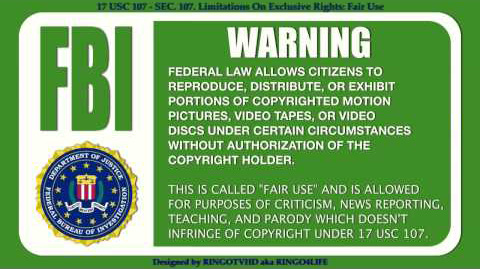
Fair Use is an exception to the copyright law that allows for limited use of protected content such as a film, music, photo, or more without having to pay a licensing fee.
Entertainment attorney Michael Donaldson explains how filmmakers can avoid mistakes over fair use.
In legal matters, it’s always wise to plan ahead. If you are hoping to use a clip from a copyrighted film, read the book Clearances and Copyright. This book suggests three different ways for documentary filmmakers to approach fair use in a project. Don’t wait till you are close to a final cut. Work on one of the three fair use approaches early in the game. If it is not a clear cut case for fair use, consult an entertainment or intellectual property attorney. Again, don’t wait till the last minute.
Don’t consult with people you know would be unhappy with your film. Stay well below the radar until you have thoroughly explored the fair use area.
Provide enough details in the Rights and Clearances Log. Most film festivals, financial backers and distributors will need to see your clearances before they will work with your film. Distributors will require you to have Errors and Omissions Insurance policy that covers the fair use items in your film. The insurance company you use will need a letter from a lawyer saying that he or she saw the film and the items in the film are used pursuant to fair use. Be careful and complete when you fill out the Rights and Clearances Log. You can save a lot of time and usually some attorney fees.
Here’s how to make a Rights and Clearances Log
List every single instance of each rights-related material such as still photographs, artwork, audio clips, video clips, music as well as any incidental capture instances of music, artwork, brands and logos, etc. So if a shot has music from a radio, or a cereal box which is visible, each instance should be logged. Even music or animation you have commissioned needs to be listed in the log. If you have to later make changes to the video or end credits after editing, you’ll waste time and money.
Remember the term “fair use” includes the word fair. You wouldn’t like it if someone used your video in an unfair manner. If you simply copy something without adding anything new to create something different than the original, that is not fair, nor is it fair use.
Here are some questions to help you determine if something is fair use:
1. Why is the music, video or whatever in your film? Does it instruct an historical or cultural point being addressed?
2. Have you used only as much as you needed? While no exact length is set in the law, there is a clause about “reasonable use” in a fair use claim.
3. Is this an incidental capture? Was music being played in a street fair or from a moving car? Did a piece of artwork or a billboard happen to be in the background? (This kind of fortuitous instance is much easier to defend in a documentary than it is in a scripted fictional film.)
4. Is the use transformative? Does this add something new to your existing work and transform it in a fashion that removes it enough from the original work’s form, content, and commercial viability?
5. Have you performed due diligence to identify and credit artists/copyright holders of any materials not produced by you in your end credits? Even if fair usage is claimed by you and you never contact or approach the author or copyright holder, crediting the work’s title and authors/producers/copyright holders in the end credits goes a long way to reducing risk of a copyright infringement charge. By giving credit you are not claiming the included work as your own.
Be sure of your legal ground before you start..






I love this so much.